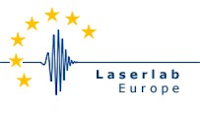Laser sources
- Amplitude Ti:Sapphire amplified laser system
central wavelength 800 nm, pulse duration 20 fs, pulse energy 15 mJ, rep rate 1 kHz.
- Coherent Ti:Sapphire amplified laser system
central wavelength 800 nm, pulse duration 40 fs, pulse energy 1.5 mJ, rep rate 1 kHz.
- Coherent Ti: Sapphire terawatt class laser system
central wavelength 800 nm, pulse duration 60 fs, pulse energy 120 mJ, rep rate 10 Hz.
- High-energy optical parametric amplifier in the near-IR
tunable between 1.3 and 1.9 μm, few-cycle pulse duration (16 fs @ 1.4 μm), pulse energy 1 mJ, passive carrier-envelope phase stability.
- High-energy optical parametric amplifier in the mid-IR
tunable between 2.4 and 3.8 μm, few-cycle pulse duration (55 fs @ 3.4 μm), pulse energy 300 μJ, passive carrier-envelope phase stability.
- Ultrafast high-energy THz source
few-cycle THz pulses with a 0.1–30 THz bandwidth (3-1000 cm-1, 0.4-120 meV) are generated by electro-optic sampling in ZnTe or GaSe crystals.
Synchronized laser sources with different pulse durations and center wavelengths are available for the rotational, vibrational, and electronic excitation of the sample.

Beamlines and End Stations
- High-order harmonic generation
High-order harmonics can be generated by focusing the driving laser pulses into different targets, depending on the experiment requirements. For HHG spectroscopy in molecules, we have pulsed gas jets with a rep rate of up to 600 Hz. For efficient generation of XUV and Soft-X radiation for pump-probe experiments, we generate harmonics inside a chip (microfluidic glass device) produced by Femtosecond Laser Micromachining.
- ULTRAS HHG Spectrometer
Flat field XUV spectrometer covering the spectral range between 16 eV and 200 eV with stigmatic configuration. This spectrometer is equipped with a single stack MCP detector.
- FESTA HHG Spectrometer
Flat field XUV/Soft-X spectrometer covering the spectral range between 16 eV and 1 keV (high resolution option available). Both stigmatic and astigmatic configurations are available, allowing the analysis of the spatial properties of harmonic radiation. This spectrometer will be equipped with a polarimeter (under construction) for the analysis of the harmonic polarization properties. This spectrometer is equipped with a double stack MCP detector driven by a custom-made power supply for the optimization of the dynamical range in HHG spectroscopy experiments.
- ASTRO beamline for transient absorption and reflectivity measurements
(currently under construction)
- Velocity Map Imaging spectrometer
For electrons up to 200 eV. The VMI can be coupled to the HHG generation chamber for near-IR - XUV pump-probe experiments.
- Optical Pump-THz Probe end station
Ultrafast pulses from a 1 kHz Ti:Sapphire laser with a center wavelength of 790 nm (1.6 eV) are used to simultaneously pump the THz time-domain spectrometer (TDS) and the samples. The THz-TDS uses ZnTe and GaSe crystals for the generation of few-cycle THz pulses with a 0.1-30 THz bandwidth (3-1000 cm-1, 0.4-120 meV) that are delivered to the sample with a system of 90° off-axis parabolic mirrors. Pump beams at 1.6 eV (790nm) and its second harmonics at 3.1 eV (400nm) are delivered by the same amplified laser system used for the THz-TDS set up. The THz detection scheme is in the framework of the free-space electro-optical sampling using the relevant birefringent crystal.
- Setup for HHG in solids
Commercial spectrometers available for the detection of HHG generated in solids by mid-IR OPA in the spectral range 2.5 μm - 200 nm.


